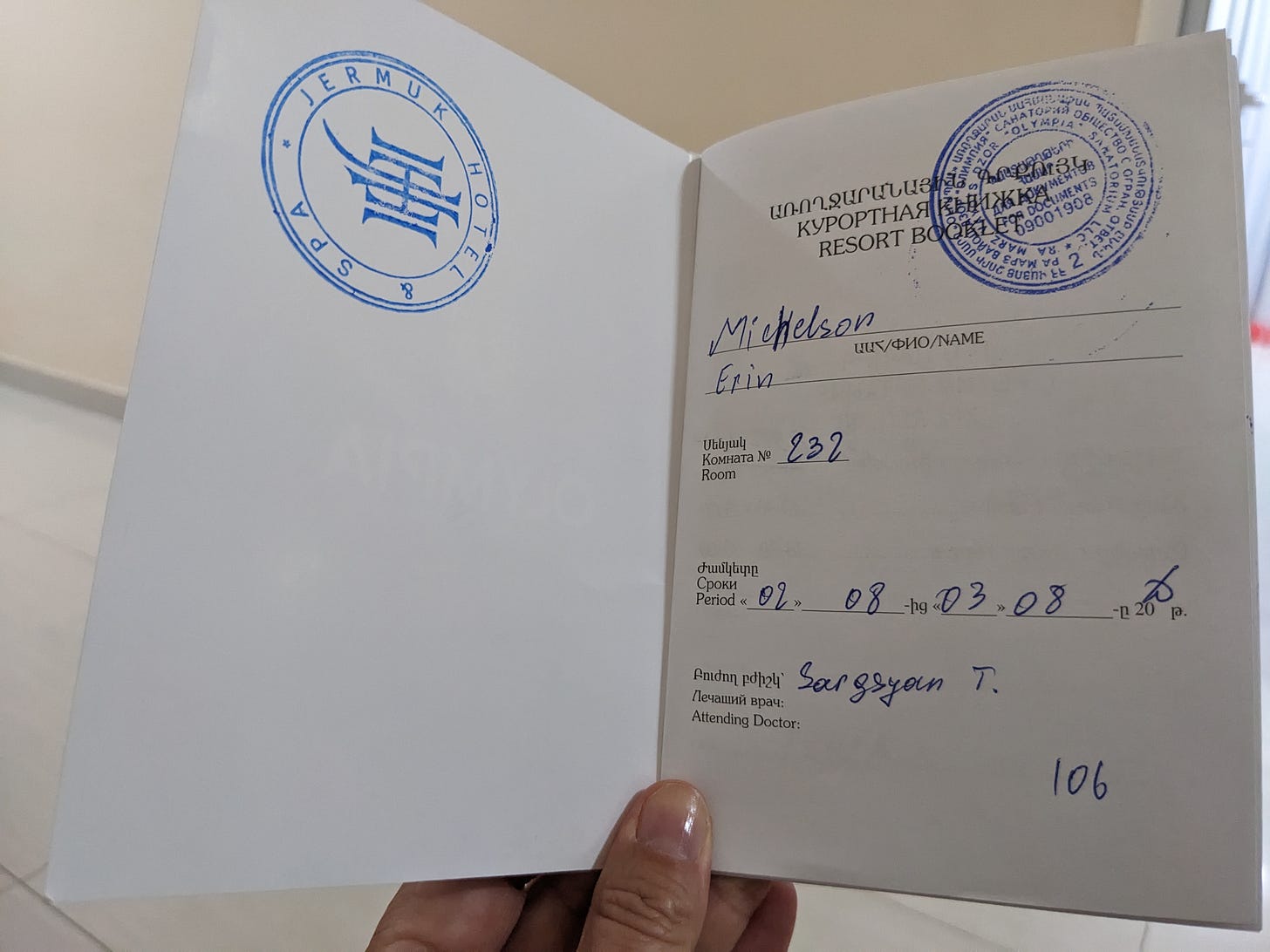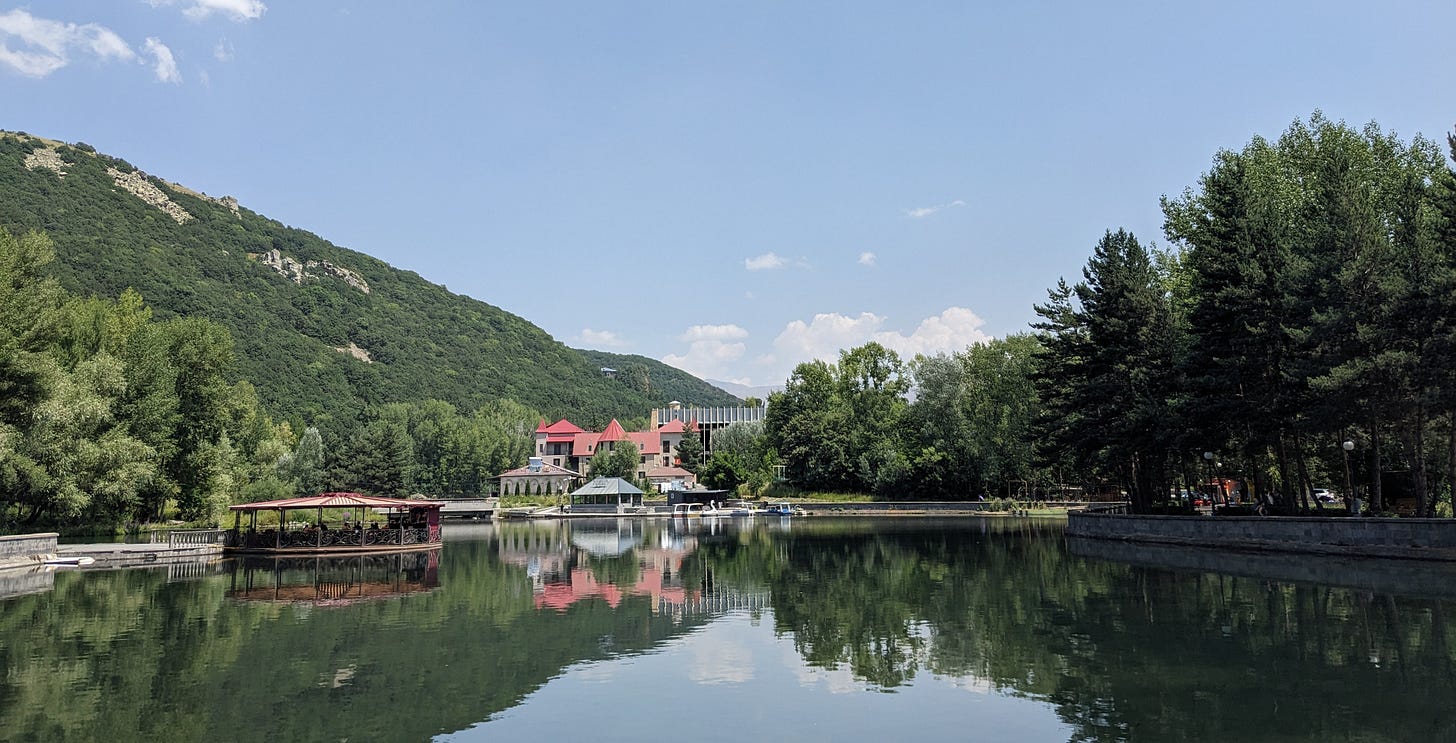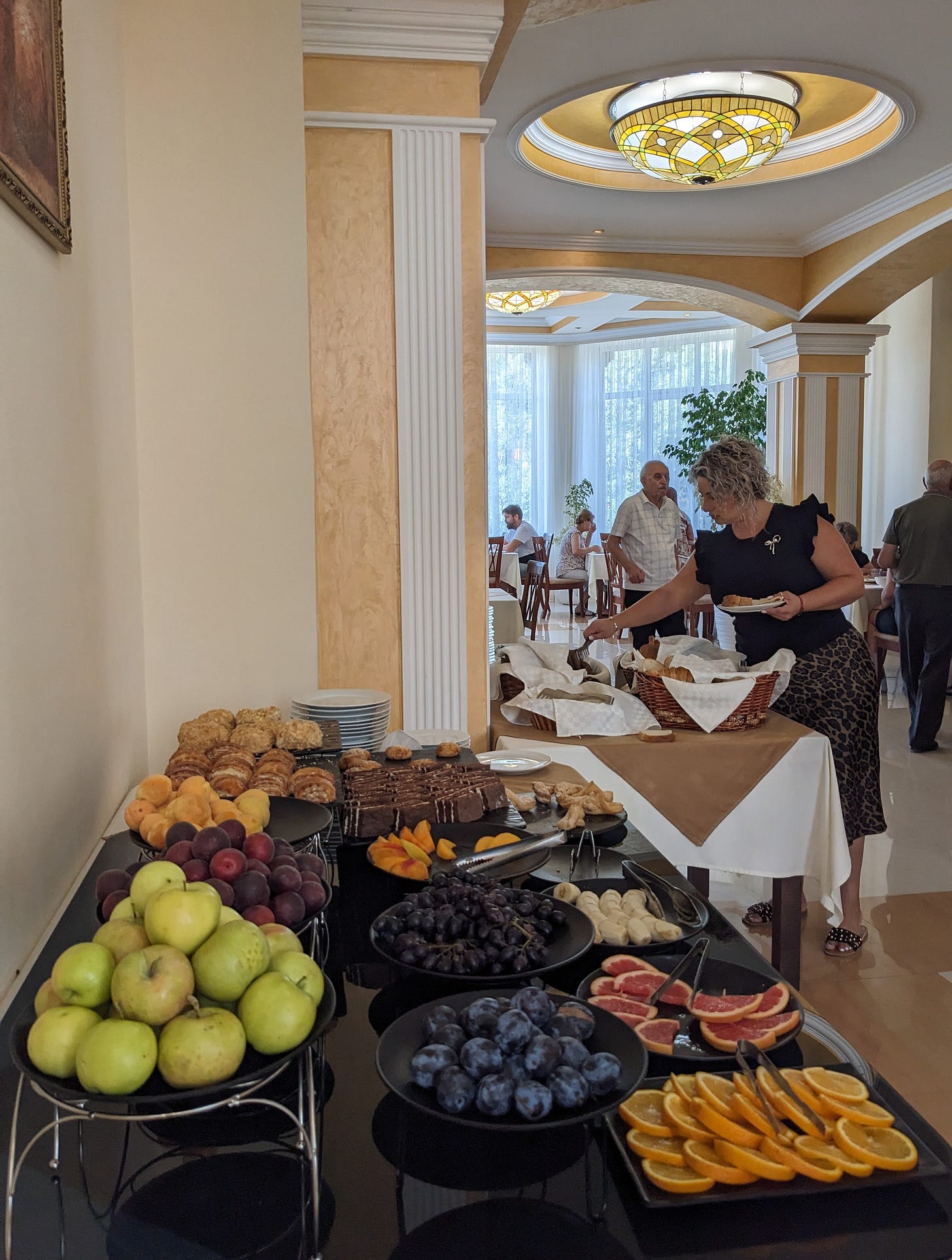My 20 Hours in a Soviet-Style Sanatorium
Cultural Delight
Visiting a sanatorium may not be everyone’s idea of a good time, but it’s mine. I became a bit obsessed with Soviet-era sanatoriums while in Armenia and decided to check myself in.
Historically, sanatoriums were known as places for medical treatment, specifically long-term convalescence for diseases such as tuberculosis. They promoted fresh air and sunshine to help with recovery.
These days, the sanatoriums are renovating the legacy Soviet-built rest homes to house spas. The sanatorium I visited was in Jermuk, an Armenian mountain town known for its healing mineral waters.
Sanatoriums as a Soviet Institution
I soon discovered that Jermuk was a favorite location, with many massive treatment centers built during the Soviet era. During the time of the Soviet Union, workers were typically granted 2-3 weeks paid respite at a sanatorium. Considered essential for good proletariat performance and health, each year, workers would descend on a designated sanatorium for state-sanctioned rest and relaxation.
As with Communism, all workers were treated the same, so workers spent their time off with their comrades partaking in the government’s “work hard, rest hard” credo. (Well, sort of the same; there were fancier sanatoriums for higher-level officials).
Each industry would be allocated a specific time at the spas, which were located throughout the Soviet Union. (Armenia was a favorite spot.) For instance, postal workers may be allocated 2 weeks at the beginning of July, railroad workers granted 2 weeks at the end of August, and school teachers, physicians, factory workers, and so on, each getting their turn at the pampered life.
Now, these massive structures are in the process of being refurbished after standing derelict for decades. And they’re becoming popular as the new hot spot for locals (and many visitors from the UAE) looking for a spa vacation.
For instance, while waiting in line for a treatment, I met a young woman who is a medical student studying to be a plastic surgeon. She accompanies her grandmother to the sanatorium each year. This is her 5th year now, and she says she looks forward to it. I spied the two of them, grandmother and granddaughter, together during meals, enjoying one another’s company.
From Sanatorium to Updated Spa (Sort of)
The more I learned, the more I became enamored with the idea of staying at a sanatorium. But despite my high hopes, an “updated spa” may have been a bit of wistful thinking on my part.
The buildings themselves have been updated and are very pretty (and still quite formal). A big part of the experience is the shared meals, buffets laden with healthy foods, such as fresh fruit and salads, and specialty teas. I had a clove-cinnamon concoction that was tasty indeed.
In addition to healthy eating, drinking the local mineral water, and taking in the fresh mountain air, each sanatorium has a medical clinic. Upon registration, you meet with a doctor who conducts a full physical exam including EKGs and blood tests, and prescribes your treatments.
I was only there a day, so my medical assessment was pretty brief, with the recommended treatments centered on my muscle soreness (too much time on the computer!). Since I don’t speak either Armenian or Russian, I was grateful my friend Larisa accompanied me to the doctor to translate.

Doctor-Prescribed Treatments
After listening to my litany of ailments, the doctor gave me a blue resort book detailing my regimen for the day, which included:
Reflexology – walking on mountain stones in warm water. There was a group of about 6-8 of us walking in a tight circle, round and round for 20 minutes.
Halotherapy – 30 minutes relaxing in a salt cave, watching a video of ocean life.
Oxygen Cocktail – I dutifully slurped down my cup of foam.
Physiotherapy – Unfortunately, I missed this session. I was supposed to be hooked up to an electromagnetic machine transmitting pulses to my legs. (Although it eerily reminded me of electroshock therapy, so I was ok to give it a miss).
Galvanic Peat Therapy – Resting in a curtain-off cubicle with warm compresses filled with galvanic peat (guessing?) placed on my back and knees.
Some of the treatments that I was *not* prescribed (I’m taking this as a good sign): Lymphatic Drainage, Gums Hydromassage, Microclyster (?), Intestinal Lavage (!), and Gynaecological Irrigation (!!). 😅
Spa Assessment
Would I come back again for a full 2-week sanatorium stay? Probably not. The treatments seemed pretty old-school, nice but nothing special.
Would I come back to Jermuk? Absolutely. This was a gorgeous area that radiated tranquility. Walking around the pretty town, you could feel your heart rate slow and your mood improve. It was the perfect place to refill your cup.
I admit, I love me a spa / hammam / hot springs visit. Are spa visits central to your travel? What was the longest you’ve ever stayed at a health resort?
If you like this essay, please leave a comment or share it with others. This will help more readers find my work. 🦋 Thank you!
Christened “Wander Woman” by National Geographic, Erin Michelson is a professional speaker and author of the Nomad Life™ series of curated trips and travel guides, including the #1-ranked “Explore the World with Nomads.”








This was such a fascinating read! I grew up in the post-Soviet space and sanatoriums were still very much “a thing” back then. I’ve never stayed in one as an adult though — your description makes me both nostalgic and a little amused (oxygen cocktail! microclyster😂). Love how you captured the mix of history and spa-culture revival.